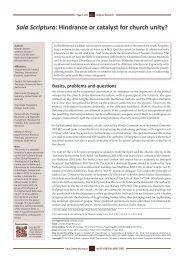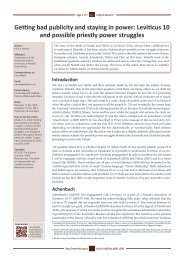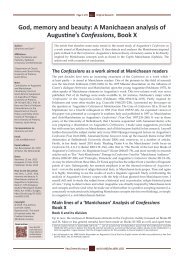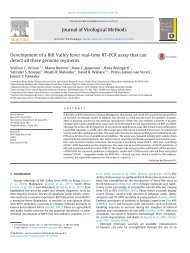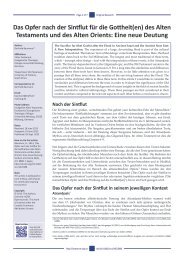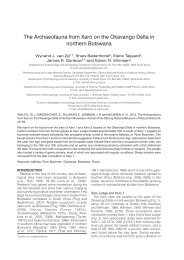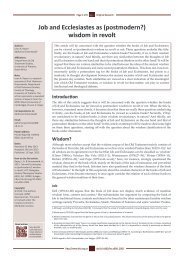Revised nomenclature and classification of inherited ichthyoses ...
Revised nomenclature and classification of inherited ichthyoses ...
Revised nomenclature and classification of inherited ichthyoses ...
You also want an ePaper? Increase the reach of your titles
YUMPU automatically turns print PDFs into web optimized ePapers that Google loves.
JAM ACAD DERMATOL<br />
VOLUME 63, NUMBER 4<br />
Fig 4. Clinical examples <strong>of</strong> other nonsyndromic forms <strong>of</strong> ichthyosis: erythrokeratodermia<br />
variabilis (EKV) that evolved like progressive symmetric erythrokeratodermia (A); palmoplantar<br />
keratoderma in EKV (B); palmar honeycomb pattern <strong>of</strong> loricrin keratoderma (C); peeling<br />
skin disease (D); congenital reticular ichthyosiform erythroderma (E); keratosis lineariseichthyosis<br />
congenitaekeratoderma (F).<br />
been successfully identified within the last two<br />
decades.* The molecular bases <strong>of</strong> only a few remain<br />
to be elucidated. The current <strong>classification</strong> was<br />
designed to reference each clinical diagnosis with<br />
the associated gene defect (Tables II <strong>and</strong> III).<br />
Nevertheless, because <strong>of</strong> the genetic diversity <strong>and</strong><br />
costs <strong>of</strong> testing, an initial carefully made clinical<br />
diagnosis, assisted by relevant laboratory <strong>and</strong> pathological<br />
evaluations, is essential to narrow the<br />
search for the affected gene (Fig 6). Helpful contacts<br />
to initiate molecular diagnostic procedures are<br />
listed in Table XIV or can be provided by the<br />
authors (see http://www.netzwerk-ichthyose.de/<br />
index.php?id=27&L=1). In consanguineous populations,<br />
homozygosity mapping may be a screening<br />
test to identify the causative gene, while saving time<br />
<strong>and</strong> reducing diagnostic costs. 187,188 It is <strong>of</strong> note that<br />
in some patients with an ichthyosis with a well-<br />
*References 15-17,22-26,32,37,40-42,44,53,57,59,67,69-71,73,75,84,<br />
86,90,96,98,99,102,104,106,114-116,121,125,174-186.<br />
Oji et al 631<br />
defined genetic basis, even extensive gene sequencing<br />
does not identify the pathogenic mutation or<br />
mutations, eg, in KPI. 189<br />
In summary, molecular diagnosis is a crucial<br />
diagnostic tool <strong>and</strong> has become in some countries<br />
the gold st<strong>and</strong>ard for the diagnosis <strong>of</strong> the <strong>ichthyoses</strong><br />
<strong>and</strong> MEDOC in general. It provides a firm basis for<br />
genetic counseling <strong>of</strong> affected individuals <strong>and</strong> families<br />
<strong>and</strong> permits DNA-based prenatal diagnosis for<br />
families at risk, as has been demonstrated in<br />
NS, 190-192 KPI, 193-195 Sjögren-Larsson syndrome, 196<br />
HI, 197,198 <strong>and</strong> others.<br />
Use <strong>of</strong> ultrastructural analyses<br />
In disorders <strong>of</strong> cornification, subcellular changes<br />
that occur in the keratinocyte organelles <strong>and</strong> structural<br />
proteins are even more heterogeneous than<br />
expected from the clinical <strong>and</strong> light microscopic view<br />
alone. Transmission electron microscopy (EM) is<br />
therefore a valuable tool <strong>and</strong> may provide important<br />
clues to the clinical diagnosis <strong>of</strong> the <strong>ichthyoses</strong> by



